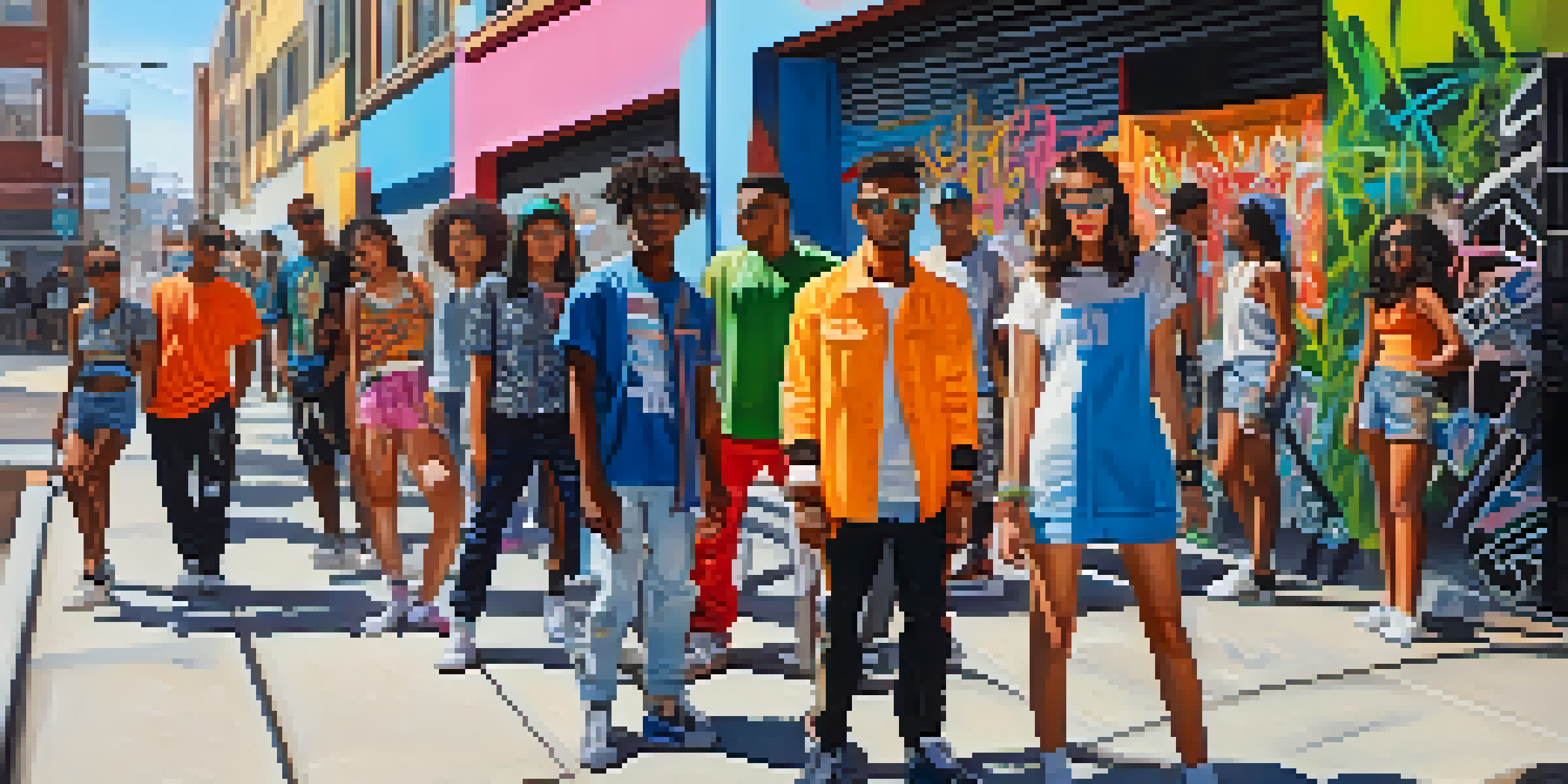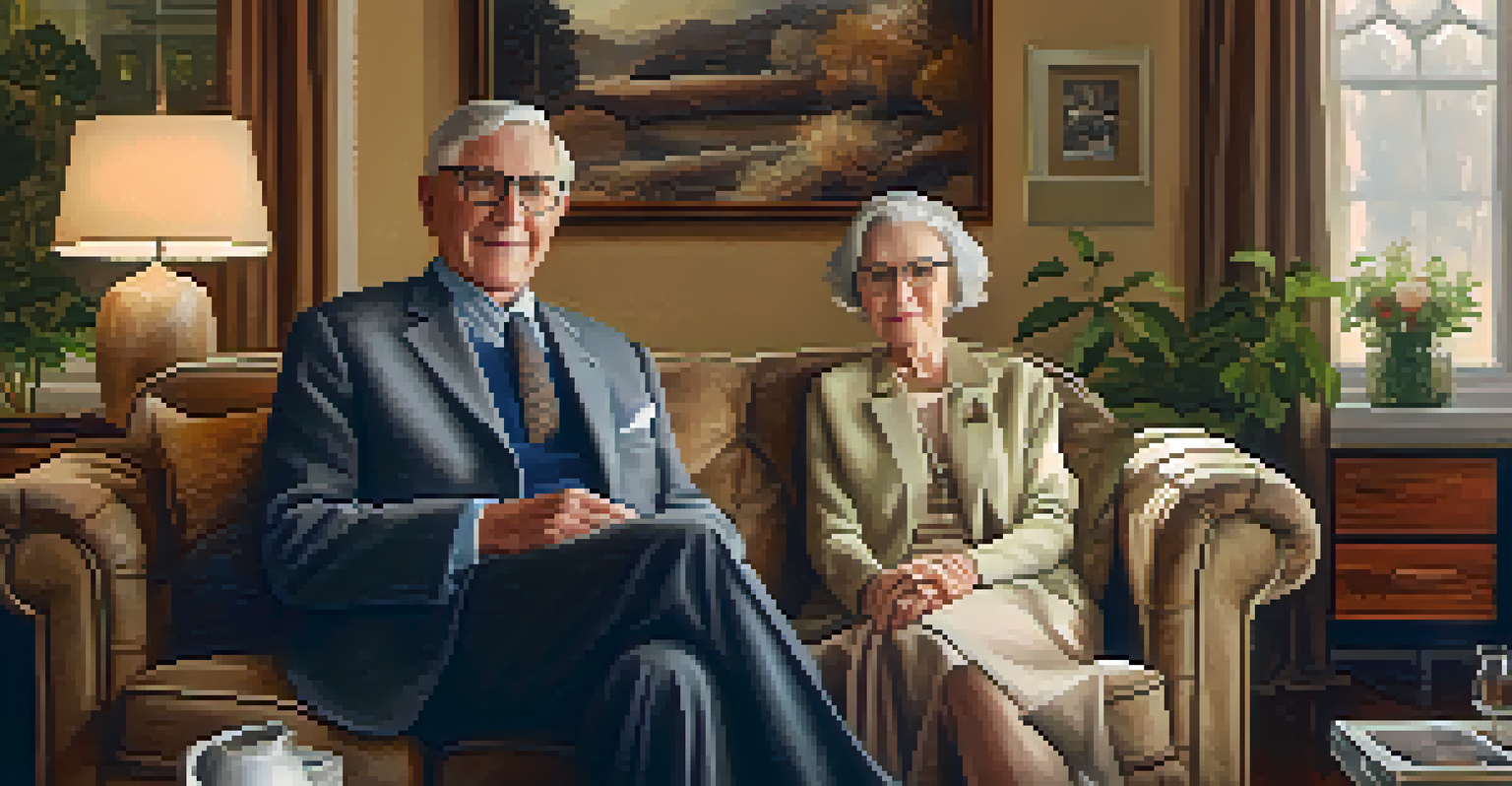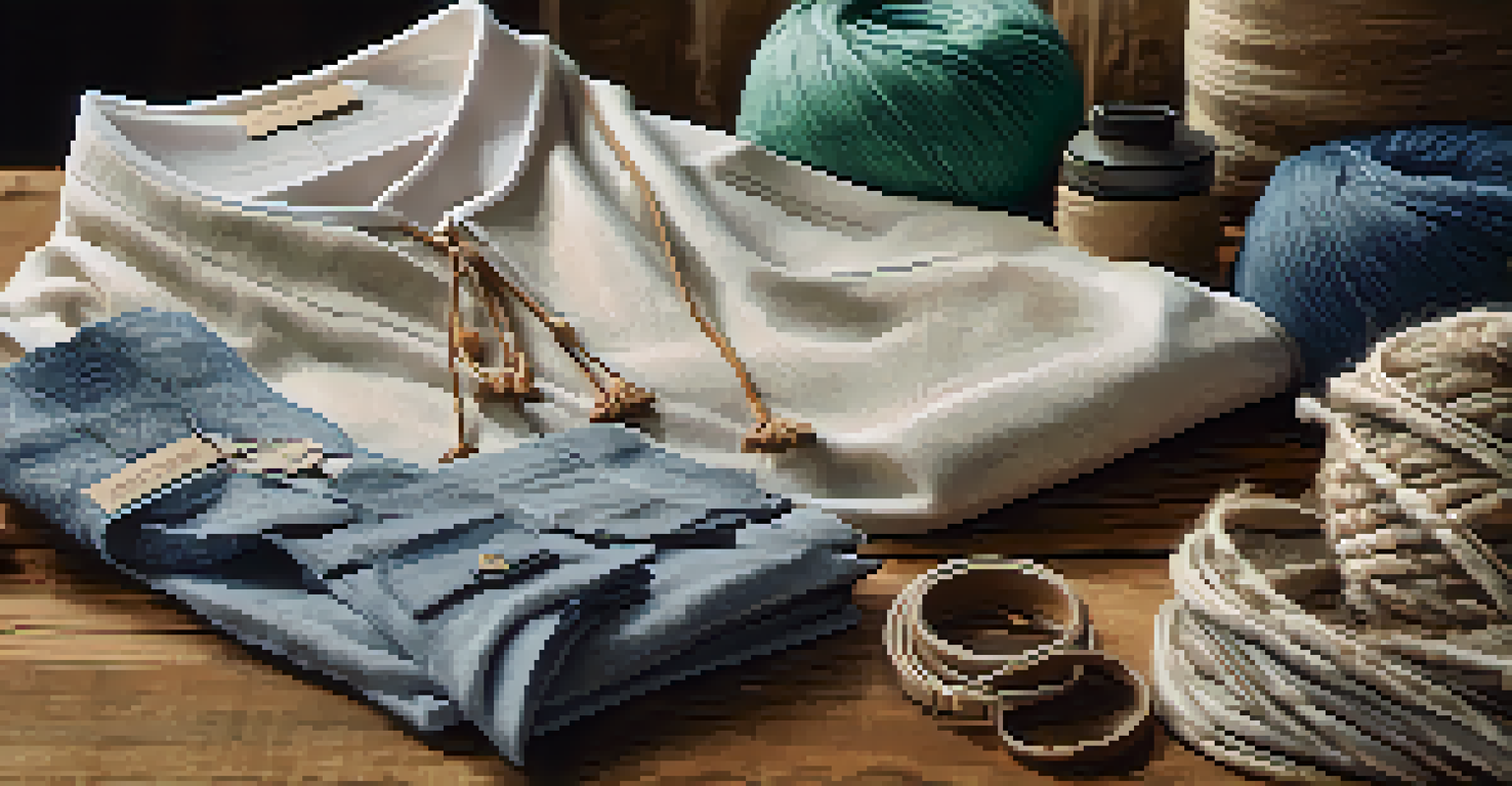The Impact of Aging on Fashion Preferences: A Deep Dive

Understanding Fashion Preferences Across Generations
Fashion is a reflection of cultural and personal identity, and as we age, our preferences evolve. Younger generations often gravitate towards bold, experimental styles, while older adults may lean towards timeless, classic pieces. These choices are influenced by lifestyle changes, social contexts, and personal experiences, creating a unique fashion journey for everyone.
Fashion is the armor to survive the reality of everyday life.
For instance, someone in their twenties may embrace vibrant colors and trendy silhouettes, seeking to express individuality. In contrast, a person in their sixties might prioritize comfort and practicality, opting for well-fitting garments that offer ease of movement. This shift highlights how age impacts our perceptions of style and practicality.
Ultimately, understanding these generational differences allows fashion brands to tailor their offerings, ensuring they resonate with diverse age groups. By recognizing that fashion is not static, we can appreciate the evolving nature of personal style throughout our lives.
The Role of Lifestyle Changes in Fashion Choices
As individuals transition through different life stages, their lifestyles significantly influence fashion preferences. For example, a young professional may prioritize work-appropriate attire, while retirees might seek relaxed, leisure-oriented clothing. These lifestyle shifts can lead to a reevaluation of what we wear and why.

Consider how parenthood might affect fashion choices; new parents often opt for practical, easy-to-wear outfits that accommodate their busy schedules. Similarly, as people retire, they may embrace a more casual style, favoring comfort over formality. This illustrates how fashion serves as a response to our daily lives and responsibilities.
Generational Fashion Preferences
Fashion choices evolve with age, reflecting lifestyle changes and personal experiences.
Recognizing these lifestyle changes enables designers and retailers to offer relevant collections that meet the evolving needs of consumers. When brands align their products with real-life experiences, they foster a deeper connection with their audience.
Comfort vs. Style: The Ongoing Fashion Debate
One of the most significant shifts in fashion preferences as we age revolves around the balance between comfort and style. For many older adults, comfort becomes a priority, often leading them to choose garments that are soft, stretchy, and easy to wear. This shift can sometimes clash with societal expectations of fashion, which often emphasize looking polished and put-together.
Style is a way to say who you are without having to speak.
For instance, while a younger individual might wear high heels for an event, an older adult might opt for stylish flats that provide support without sacrificing aesthetic appeal. This doesn’t mean that older adults abandon style; rather, they redefine it by incorporating elements that prioritize their well-being.
The trend toward comfortable yet fashionable clothing has influenced many brands to create collections that cater to this desire. This evolution in fashion reflects a broader understanding that style can coexist with comfort, leading to more inclusive design.
Cultural Influences on Fashion Preferences with Age
Cultural background plays a crucial role in shaping fashion preferences throughout life. As people age, their cultural influences can lead to a deeper appreciation for traditional styles or a desire to merge contemporary trends with cultural heritage. This interplay between culture and age can give rise to unique fashion expressions.
For example, an individual from a culture that values traditional attire may incorporate these elements into their everyday wardrobe, even as they age. This blending of old and new demonstrates how fashion can tell a story, reflecting both personal history and cultural identity.
Comfort Over Style for Older Adults
As people age, comfort often takes precedence in their fashion decisions, leading to a redefined sense of style.
As the fashion industry becomes increasingly globalized, it is essential for brands to honor and celebrate diverse cultural influences. By doing so, they can create collections that resonate with consumers of all ages, fostering a sense of belonging and representation.
The Impact of Media and Celebrity Influence on Fashion Choices
Media and celebrity culture significantly impact fashion preferences across age groups. Younger generations often look to influencers and celebrities for inspiration, while older adults may find their fashion cues from classic icons or lifestyle magazines. This dynamic showcases how different age groups engage with fashion media.
For instance, social media platforms like Instagram are filled with fashion-forward content that appeals to younger audiences, encouraging them to experiment with their style. Conversely, older individuals might gravitate toward timeless looks promoted by legacy brands or established figures, seeking inspiration that aligns with their aesthetic values.
Understanding these varying influences allows brands to tailor their marketing strategies effectively. By recognizing the platforms and figures that resonate with different demographics, they can engage their audience more meaningfully, fostering brand loyalty.
Sustainability and Ethical Fashion Concerns with Aging
As consumers age, many become increasingly aware of sustainability and ethical fashion. Older adults often reflect on their purchasing habits, leading them to prioritize brands that align with their values, such as eco-friendliness and ethical production. This shift represents a significant change in fashion preferences, as consumers seek to make more responsible choices.
For example, where younger consumers might be drawn to fast fashion due to affordability, older individuals may opt for high-quality, sustainable pieces that last longer and have a lower environmental impact. This transition highlights a growing consciousness about the implications of fashion on the planet.
Sustainability Matters to Consumers
Older adults increasingly prioritize sustainable and ethical fashion, seeking brands that align with their values.
Fashion brands that embrace sustainability not only appeal to this demographic but also contribute positively to the industry. By fostering transparency and ethical practices, they can cultivate a loyal customer base that values both style and responsibility.
The Future of Fashion Preferences Among Older Adults
Looking ahead, the fashion preferences of older adults are likely to continue evolving. As society becomes more inclusive and diverse, there will be a growing demand for styles that cater to a wide range of body types, lifestyles, and personal expressions. This shift reflects a broader trend toward recognizing the individuality of all consumers, regardless of age.
Brands that prioritize inclusivity in their designs will likely find success in appealing to older audiences. This may include offering extended size ranges, adaptive clothing for those with mobility challenges, and styles that resonate with a more mature aesthetic.

Ultimately, the future of fashion will be shaped by the voices and preferences of older adults. By embracing this demographic, the industry can foster innovation and creativity that honors the unique journey of aging and style.